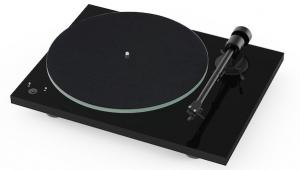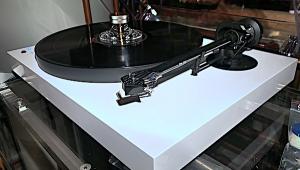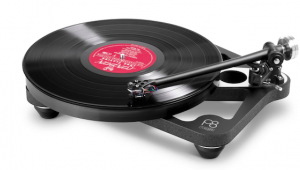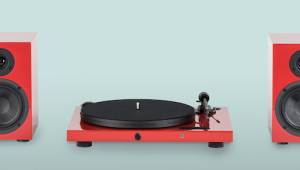Al establecer un sistema transparente y objetivo para el calculo de las horas trabajadas y los beneficios obtenidos, se eliminan las posibles discrepancias o favoritismos que podrian surgir en la asignacion de dias libres, horas extras u otros incentivos. Esto es especialmente importante en empresas grandes o con estructuras jerarquicas complejas, donde puede haber diferencias en los contratos o acuerdos laborales entre empleados for calculadora de horas de trabajo con almuerzo . Con una calculadora de horas de beneficios, se garantiza que todos los trabajadores reciben el trato justo que les corresponde segun las políticas establecidas.
Continuum Audio Labs Caliburn turntable & Cobra tonearm Page 2
The bearing shaft itself is a single, massive unit 5" long and 1" in diameter, precision-ground from heat-treated, hard steel alloy. Usually, turntable bearing shafts are described as "highly polished." Not this one. Continuum says that such a surface is ideal only in applications that must spin at high speeds, such as a hard-disk drive, where the speed itself helps create the needed film of lubricating oil. The Caliburn's bearing shaft is actually slightly abraded, allowing it to pick up and retain the lubricant. "It's counterintuitive," says Doehmann, "but it's correct." The bearing is pressurized with a pump to increase the circulation of oil.
The rest of the bearing assembly is a classic configuration of a super-hard ceramic thrust plate running on a ball of hardened steel. At this point I can hear skeptics saying "An 84-lb platter rides on a steel ball and thrust plate? Ha! You'll be changing thrust plates and balls once a week—and more often than that if you actually spin the platter and play records!"
Continuum chose the ball-and-thrust-plate approach over an air-bearing platter because they believe, among other things, that if you don't mechanically ground a platter, vibrations created within it have nowhere to go but back to its surface—and all rotating platters, no matter how carefully machined, wobble and vibrate to some degree (bearing imperfections also play a part in this).
To reduce the enormous downward force of the Caliburn platter's mass while maintaining the contact between bearing, ball, and thrust plate, and allowing oil to circulate between ball and plate, the platter is magnetically levitated, leaving only 6 lbs of downward pressure. Continuum and other advocates of traditional bearings claim that speed accuracy actually improves and requires less correctional monitoring when there is some minimal frictional drag—something air bearings lack.
Like an airplane wing flap
Ever watch an airplane's wing flap open during landing to reveal a scary-looking maze of hydraulic lines, pistons, shafts, and gears? That's what the Caliburn's innards look like. The chassis is cast as a relatively deep, walled compartment containing a number of outcroppings and plateaus, some based on vibrational modeling and some with a secondary purpose. Hoses and pipes associated with the vacuum holddown and lubrication system snake along the chassis floor, which also holds the two large, semicircular platter-levitation magnets.
Most unusual are four oval pods, one adjacent to each chassis corner. These are the tonearm mounts. The cuplike pods, each about the size of a small adult's fist (mine, not Doehmann's; he'd be lucky to wedge in two fingers), are also cast of magnesium alloy. Each pod weighs 11 lbs, is filled with what appears to be lead shot "and a few other things" Doehmann wouldn't identify, and is sealed with a waxy plastic material. The pods are independently suspended within the chassis, secured at high tension by slings of aeronautical-grade Kevlar fiber. Doehmann says these fibers will not stretch, and let's hope he's right—the fibers are tensioned by hand, and terminated using hardware attached to cast structures within the chassis.
The Cobra tonearm mounts to one of two massive rectangular plates of cast magnesium alloy, each of these attached to two of the pods. Thus pods, mounting plate, and tonearm float free of both the chassis and its purely decorative top cover. Before that cover can go on, however, the monster motor housing and pulley assembly must be precisely located atop the Castellon stand to await the arrival of the 160-lb chassis-platter assembly, which rests atop the stand on three large, round feet that have been strategically located via computer modeling (of course).
Motor and computer-controlled drive system
The Caliburn's DC motor is custom-built by Continuum using core technologies from a number of US companies. It's battery-powered, brushless, absolutely cog-free, and 93% efficient. Doehmann began to explain how it works, but my eyes glazed over. We figured it's not critical for you to know the details.
I gave the motor a few turns, and it was easily the smoothest spinner I've spun. There was absolutely no cogging. It's also a big motor, not a little snail in a large shell. Big isn't good if it's also noisy, but this motor ran smooth and ultraquiet. Through my stethoscope I detected no noise whatsoever anywhere on the Caliburn, including on the motor housing itself. That's a first.
With the chassis in place, the Pyrathane O-ring slips over both the platter and the grooved pulley fitted to the motor shaft. I noted that the pulley sleeve had plenty of set-screws for achieving perfect concentricity. Only then can the top plate be fitted and the tonearm(s) installed.
I'm sure skeptics and cynics are at this moment saying to themselves, "Whoever buys this baby is going to be removing the arms and top plate every few weeks to get to that O-ring, because it's going to break, get shaved, or stretch beyond recognition pretty quickly trying to get an 84-lb platter spinning. What were these guys thinking?"
In fact, the software-driven motor-control system addresses the startup problem by giving the motor a short series of nudges, to give the platter a wake-up call before actuating a slow start. The controller also monitors motor speed and specifies a certain small amount of drag to control speed accuracy. Continuum is certain the O-ring will last well in excess of three years before needing to be replaced. Because they also suggest the Caliburn be serviced every three years to change the oil, that's long enough.
Cobra tonearm
The Caliburn design team began with a blank page here as well. After carefully considering tangential tracking, via an air bearing or other means, they decided against it. The Cobra's odd shape—wider and taller in the middle—is based on computer modeling and common sense: The stiffest part of a tonearm must be in the middle, between pivot and stylus, where the arm—regardless of its shape or what it's made of—will exhibit the greatest flex the most resonances and vibrational modes. And the greater the armtube's diameter, the stiffer it would be. When a string vibrates, the modes begin at the center and radiate outward. The same is true of an armtube: Resonances created at its center will travel toward the pivot and the stylus. The goal is to make the central location as stiff and free of resonances as possible.
To achieve a minimum mass with maximum stiffness, the Cobra is, like a surfboard, built using monocoque construction: a foam core wrapped in a natural fiber they'd rather not identify (to avoid customs hassles), this coated in an epoxy resin. The hardened resin is then sanded, drilled, and painted. Continuum claims no additional damping material is needed—the arm is inherently well damped.
The Cobra has no counterweight in the traditional sense; the goal was to keep the center of the arm's mass fixed; moving a counterweight fore and aft would shift the mass and change the arm's overall effective mass. Instead, the Cobra's back has a fixed, downward-facing receptacle into which washers of various weights can be added until the proper vertical tracking force (VTF) is approximated. The VTF can then be fine-tuned with a worm screw threaded into a hole drilled just behind and over the pivot. Does this make the Cobra's VTF a royal pain to set? The arm's mass was chosen to maximize the performance of medium-compliance moving-coil cartridges, its horizontal and vertical resonant frequencies hitting a desirable value of about 8.1Hz (ie, above the range of warp and wow and below the range of music).
The Cobra's primary pivot is a precision sapphire Vee Jewel with matching central pivot, as used in high-quality aircraft instruments. Continuum claims this kind of pivot doesn't require heavy mass loading in order to prevent "chatter"—a good thing, because there is no heavy mass above it. A secondary vertical pivot used for azimuth stabilization features a hardened-steel pin resting on a manmade sapphire-ring swash plate, which rotates via two precision-matched, vertically opposed, internally damped ABEC 7 bearings to provide horizontal arm motion. Totally original in my experience, and very ingenious.
Equally ingenious is the scheme for adjusting azimuth: the swash plate and horizontal bearing assembly is set in a precision threaded mechanism featuring a clock-face engraving. Rotating the assembly raises or lowers the swash plate along with the secondary pivot resting on it, thus shifting the azimuth.
- Log in or register to post comments


Your article has detailed the Cobra system with its sophisticated design and excellent sound tracking, along with the Caliburn turntable for easy, accurate basket random listening. The product promises to bring great sound without complicated maintenance.

This turntable and tonearm combo sounds like an audiophile’s dream! The precision engineering and design of the Caliburn and Cobra must offer an incredibly rich and detailed listening experience. I’d love to know how it performs with different vinyl genres. After an intense session listening to vinyl on the Caliburn, I like to unwind with a quick round of the basket random game for some lighthearted fun.




















































